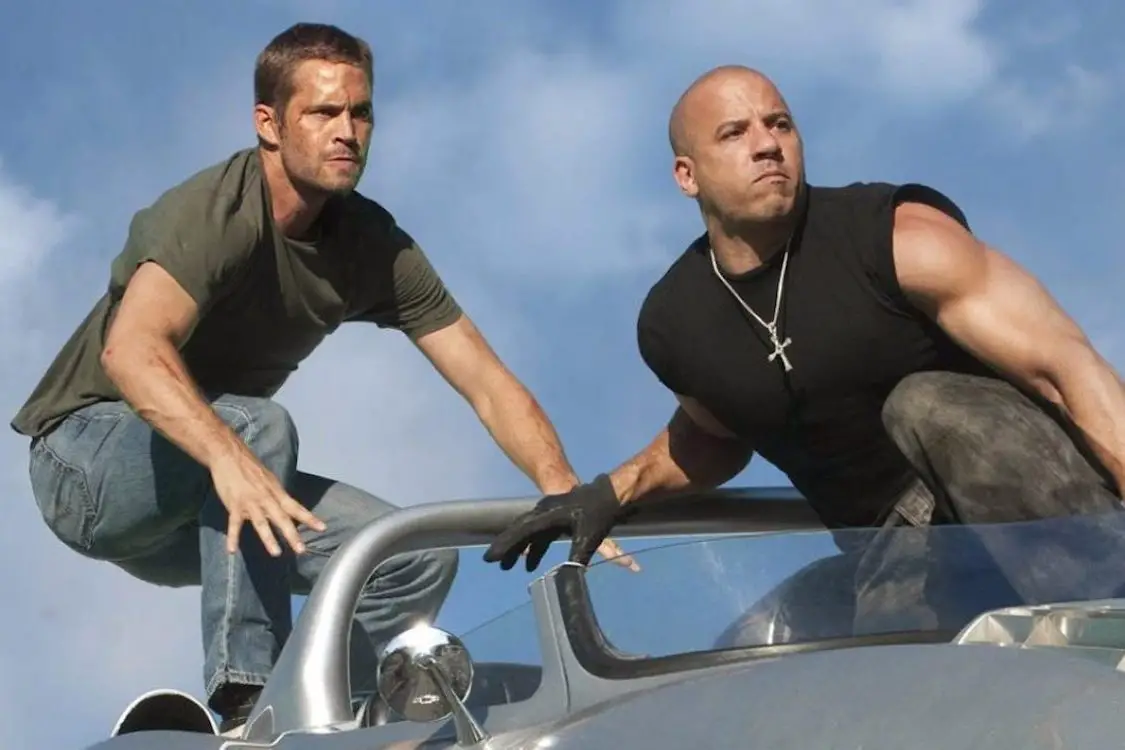Action films are an oddity in the movie industry. Despite remaining one of the most commercially successful genres for multiple decades, few action movies are acknowledged as anything more than mindless entertainment. Admittedly, this stems from the prevalence of dumb fun in the industry or movies that often prioritize explosive spectacle over storytelling or quality acting.
While a “dumb fun” film provides an entertaining plot and memorable performances, these elements are often buried underneath ridiculous set-pieces or an abundance of special effects. Despite their flaws, these action flicks provide a medium to showcase other essential skills and specialties often left unrecognized in the movie industry.
Blockbuster Stunts
High-budget Hollywood action films are often derided for sacrificing the story for dumb fun. However, many movies use their simplistic stories as an excuse to deliver scenes that are as ridiculous and implausible as they are entertaining and creative. The “Fast and Furious” franchise is one of the most famous examples of dumb fun. Despite straying incredibly far from the series’s street-racing origins, each entry has found new ways to entertain audiences with luxury cars, impressive stunt work and occasional CGI (computer-generated imagery).
The series’s dedication to practical effects required much work from stunt performers and action choreographers to bring many seemingly impossible acts to life. Examples of these moments involve launching a car onto a boat in “2 Fast 2 Furious” and parachuting automobiles from a plane in “Furious 7.” The series’s most famous example is the chase scene from “Fast Five.” In the film, the protagonists Dominic Toretto (Vin Diesel) and Brian O’Conner (Paul Walker) steal a money-filled vault by tethering it to their cars and dragging it through the streets of Rio de Janeiro.
An analysis of this scene by Nerdstalgic and Vanity Fair’s interview with the film’s stunt coordinator, Jack Gill, reveals the production team’s extensive process for bringing this scenario to life. The crew designed destructible props, multiple vaults and even an entire building for the vault to crash through. The size and weight of the vault also meant each vehicle’s movements required extreme precision due to a low margin for error. Although some stunt performers suffered a few minor injuries, the team successfully crafted one of the most elaborate practical stunt sequences in movie history.
The “Fast and Furious” series is full of outlandish scenes, notable for their ability to immerse viewers in explosive action and impress movie aficionados with fantastically designed stunts and effects. When looking at this series and other “dumb fun” films, their appeal stems from the admiration of the craft and talent behind these feats.
Experimental Indies
Although dumb fun is often associated with high-budget action flicks, some indie films use a monumental focus on action to refine or innovate the genre. Their low budgets may not always allow them to imitate a standard Hollywood film’s massive sets and special effects, but they make up for this by experimenting with the medium.
“The Raid: Redemption” adopts principles similar to most other “dumb fun” action films. Its straightforward storyline acts as a framing device for the relentless barrage of high-stakes shoot-outs and fast-paced martial arts, primarily silat, used to create the thrilling action classic. Fights in “The Raid: Redemption” strive to avoid the mistakes of other movies by portraying action more realistically. In a production blog, the director, Gareth Evans, revealed that he sent the main actors to boot camp to ensure this effect.
The film frames action sequences in a manner that shows all the characters as skilled yet vulnerable fighters. The protagonist, Rama (Iko Uwais), can fend off multiple attackers at once but will run from armed assailants or attempt to disarm them. Though the movie has fast-paced fights, the excellent camerawork ensures that every movement appears swift but clear to the audience.
Even with its simple story, the film engages viewers through the tension and intensity of each battle, assisted by the carefully crafted atmosphere and masterful choreography. “The Raid: Redemption” maintains constant breakneck pacing that never feels exhausting or repetitive because of these outstanding aspects. It perfectly embodies how dumb fun action can be refined into fantastic works. Even with its limited budget of $1 million (much less than the $125 million from “Fast Five” released the same year), this film still outshines most other titles in the genre.
“Hardcore Henry” is another action film with a tight budget, having only $2 million available for production. Rather than refining the genre, its crew worked toward the ambitious project of creating a feature-length action movie filmed entirely from a first-person perspective. Director Ilya Naishuller first experimented with this format in a music video for his band, Biting Elbows. However, the larger budget and film length allowed Naishuller to construct action and stories that operated on a grander scale.
Along with the usual difficulties of organizing cinematic moments, the team faced the challenge of controlling the camera while attached to a stunt actor. In a behind-the-scenes interview, the crew revealed their process of creating a mask that would attach a go-pro camera to the actor’s chin.
The lower position steadied the camera and aided in filming the rest of the body for certain scenes, creating the impression that the movie is viewed through the eyes of its protagonist. This unorthodox approach is not found in many blockbuster titles, yet the film uses its video game-inspired cinematography to great effect.
Like “The Raid: Redemption,” “Hardcore Henry” boasts a breakneck pace that carries the audience through parkour stunts, car chases and close-quarters firefights. Although some considered the movie’s immersive quality as detrimental since it caused motion-sickness in many viewers, no other film has successfully replicated the experimental, dumb fun action of “Hardcore Henry.”
Animated Action
While animated films are commonly associated with action, few animated movies are considered “dumb fun.” Most prominent animation studios like Disney Animation, Pixar and Studio Ghibli prioritize emotional storytelling and characterization over action in their films. In contrast, Madhouse’s “Redline” crams as much effort and detail into each of its visceral action scenes.
The film follows JP, a professional race car driver who enters an event known as “the Redline.” This race gathers drivers from around the galaxy to compete along a dangerous track in high-speed custom cars. The simplistic premise and sci-fi setting are accompanied by multiple sub-plots, including riggings conducted by a mafia organization, a growing interplanetary war and a romance between JP and another racer. Despite many interweaving storylines, “Redline” always emphasizes its dumb fun action and imaginative aesthetics above other elements.
The comic book-inspired art style of “Redline” gives the film’s characters, environment and vehicle designs a distinctive blend of cartoonish extravagance and grounded detail. While this adds to the liveliness of the film’s world, it’s most effectively used in its action scenes. Onlookers and structures are blown away by cars passing by in an instant.
The drivers constantly move inside the vehicle when shifting gears or activating hidden weaponry unique to each car. By the final race, the racers are struggling to withstand the vehicle’s speed as blood, sweat and tears pour from their faces in vivid detail as the car itself is torn to pieces by g-force. “Redline” spares little expense in its push to showcase its adrenaline-filled action in an exciting manner.
“Redline” required a 7-year production and a $30 million budget. Unfortunately, it failed to attract a large enough audience to recuperate its costs, and it only made $8 million at the box office. Despite this, “Redline” perfectly embodies the qualities of dumb fun in every regard. Its fantastically fluid animation and imaginative world help deliver a film where every scene feels like a passion project from its creators.
Thematic Uses
Although dumb fun action films typically disincentivize storytelling, some examples use it as a pretense to deliver insightful commentary. “Starship Troopers” is one example of an action movie that incorporates political satire and social commentary into its narrative. At first glance, the film appears to be a campy sci-fi action flick about a war between humanity and an alien species called the “arachnids.”
Its self-aware story and cheesy acting pay homage to the sci-fi films of the ’50s and ’60s. However, this tone contrasts with the violent and gore-filled action sequences, where the surprisingly well-aged visual effects and excellent cinematography present harrowing scenes across massive battlefields.
The movie adopts a different context when understanding the goals of its director, Paul Verhoeven, in adapting Robert A. Heinlein’s 1959 novel of the same name. Although they share the same premise, both works present wildly different approaches toward their portrayal of a fictional, militaristic government wherein citizenship is earned through military service. This concept is often considered the most controversial aspect of both works.
Heinlein originally depicted this system in a straightforward manner, causing literary critics to debate whether Heinlein intended his book to be a critique or a justification of this system. After reading the first few chapters of the novel, Verhoeven believed it was the latter and thus transformed the work into a satirical critique of Heinlein’s proposed militaristic structure.
The film’s campy style intentionally emulates the appearance of a propaganda movie, with occasional narration between scenes that always end with the question, “Would you like to know more?” The extreme violence of these action scenes presents the soldiers as ill-prepared and expendable as they suffer innumerable casualties, creating a bleak contrast between the falsehoods of these propaganda pieces and the harsh reality the soldiers eventually face. In an interview with The Guardian, Verhoeven describes how he modeled the government and aesthetic of “Starship Troopers” after Nazism to highlight the fascist subtext he perceived in Heinlein’s novel.
Despite intending the film to be a critique of fascism, Verhoeven was accused of supporting it by news outlets such as the Washington Post who had misinterpreted the film at release. This, unfortunately, led the film to become a box office failure. However, “Starship Troopers” has become a cult classic in recent years, with many fans now appreciating it as a dumb fun action flick and an insightful political satire.
Reevaluating Dumb Fun Movies
While storytelling is undoubtedly crucial in filmmaking, the teams behind dumb fun films deserve more recognition. Fortunately, the resurgence of action movies with Marvel films and the “John Wick” series demonstrates the effort and skill required to perform stunts or create believable special effects. Award shows have also given more attention to the action genre, such as “Mad Max: Fury Road,” which won six Oscars at the 88th Academy Awards in 2016. Ultimately, the value of dumb fun encompasses everyone and everything involved in capturing the imaginations of audiences with over-the-top action that seems too spectacular to be true.

















